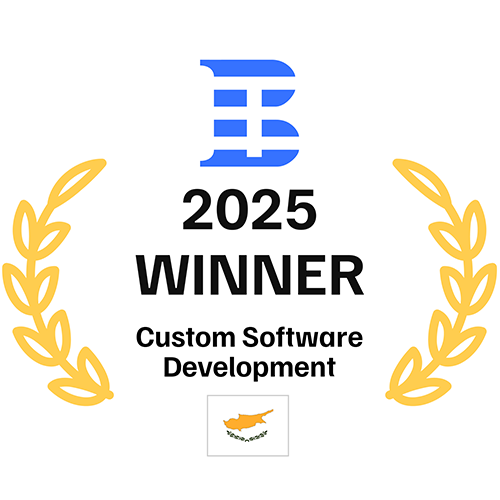Telecommunications companies face constant pressure to stay competitive by enhancing both their operations and employee skill sets. To address these needs, custom telecommunications software solutions are emerging as a critical factor in achieving operational efficiency and meeting customer demands. These software solutions offer telecom providers the tools necessary to streamline processes, reduce downtime, and improve service delivery across networks.
On the other hand, virtual training solutions have become a powerful asset for educating and upskilling employees in complex telecom environments. By utilizing virtual simulations, these training programs offer telecom teams the opportunity to master technical skills in a controlled and engaging environment, ultimately leading to better performance on the job. Both software and training are driving measurable improvements for telecom operators, helping them meet the challenges of today’s fast-paced industry.
The Rise of Virtual Training in Telecom

Virtual reality training companies have gained significant traction in the telecom sector. Their focus on offering software solutions for telecom helps bridge the gap in employee skills development. The growing complexity of network systems requires advanced training approaches that traditional methods cannot fulfill. Virtual training provides a scalable, efficient way to train telecom teams on critical tasks, from troubleshooting to maintenance. As more companies adopt these technologies, telecom firms are gaining an edge in workforce readiness and operational efficiency.
How Extended Reality Is Changing Telecom Industry Standards
Extended reality (XR) technologies, including virtual reality (VR) and augmented reality (AR), significantly impact the telecommunications sector by transforming training and operations. Telecom companies can enhance their existing training models by adopting VR training solutions for oil and gas industries. These solutions offer an immersive environment where telecom teams can engage in high-stakes scenario-based learning, providing essential hands-on experience without the associated risks. Virtual simulations allow practicing tasks such as troubleshooting, equipment handling, and service restoration in a safe, controlled setting.
One critical benefit is the ability to replicate challenging real-world situations, enabling employees to react and adapt in real-time. This flexibility makes XR ideal for training field technicians and network engineers. Simulations can cover areas such as network failures, natural disaster responses, and emergency protocol execution. Such an approach minimizes downtime and increases the reliability of telecom services since trained employees handle real-life challenges more effectively after honing their skills in virtual environments.
Moreover, XR can be integrated into customer service training, allowing telecom support staff to practice dealing with complex customer inquiries in realistic, interactive settings. By improving both technical and soft skills, XR solutions foster a more capable and responsive workforce, ultimately benefiting the end customer. Telecom companies implementing XR-based solutions are witnessing higher workforce performance, quicker resolution times, and a noticeable decrease in operational errors.
Augmented and Virtual Reality — Enhancing Operations and Team Development
Telecom operators increasingly leverage augmented reality (AR) and virtual reality (VR) to improve workforce efficiency and collaborative performance. The development of VR app development solutions is paving the way for enhanced team-based training programs far more effective than traditional methods. VR simulations allow employees to interact in dynamic virtual environments, fostering team collaboration on critical projects such as network installations or emergency management.
Beyond training, AR tools are streamlining field operations. Technicians equipped with AR glasses can access real-time data overlays, enabling them to diagnose and repair network issues faster and with greater accuracy. This technology provides visual guidance, making it easier for field workers to understand complex setups and conduct repairs efficiently, even in challenging environments. Telecom companies are finding that AR-assisted tools significantly reduce the margin for human error, shorten repair times, and increase overall service reliability.
Collaboration across teams also benefits from these technologies. For example, virtual reality enables remote teams to collaborate on system upgrades or troubleshooting through shared digital environments. Even when geographically dispersed, teams can work on the same projects in real time, allowing for quicker decision-making and enhanced problem-solving capabilities. Telecom companies that invest in these tools are seeing improved productivity, better project execution, and more robust team dynamics, resulting in higher service quality for their clients and customers.
Overcoming Barriers to Adopting Advanced Training Technologies
Telecom companies face several challenges when implementing advanced training technologies like virtual reality training solutions. The first barrier often involves the perceived cost of integrating these solutions into existing systems. Many organizations hesitate, assuming that VR and AR technologies require significant upfront investment in hardware and software. However, what often goes overlooked is the long-term cost efficiency. Virtual training reduces the need for physical equipment, minimizes travel expenses for trainers and trainees, and lowers the risk of damage to actual telecom infrastructure during training sessions. Over time, the return on investment becomes evident.
Another common challenge lies in employee resistance to new technologies. Staff members unfamiliar with VR/AR or other advanced tools may initially be reluctant to engage. Overcoming this requires a solid change management strategy, where employees are introduced gradually to the technology. Offering initial demonstrations and providing ample hands-on practice can help telecom teams feel more comfortable and confident in using these training tools. Creating an open channel for feedback allows teams to express concerns, which can then be addressed in the deployment process.
A third barrier relates to integrating VR and AR solutions into existing training frameworks. Ensuring these new tools seamlessly work with current software and systems is crucial to avoid disruptions. Some telecom companies solve this by working with experienced providers of custom telecommunications software solutions, ensuring the new technology fits their unique operational requirements. Proper integration allows companies to utilize virtual training without experiencing compatibility issues, which further smooths the adoption process.
Why Telecom Companies Need Next-Generation Training Programs

The rapidly evolving telecommunications industry demands advanced skill sets that traditional training methods struggle to provide. Next-generation training programs incorporating technologies like VR and AR offer scalable and efficient ways to upskill employees. By adopting these tools, telecom companies can address technical and operational challenges while ensuring their workforce stays up-to-date with industry standards. Such programs boost employee performance and significantly reduce training costs in the long run.
Elevating Employee Skills with Virtual Simulations
Types of simulation training offer a wide range of applications for telecom employees, from mastering technical tasks to improving soft skills. One of the most effective methods is task-based simulation, which allows employees to practice real-life operations in a risk-free virtual environment. For example, technicians can troubleshoot network issues, perform equipment installations, or manage complex system configurations without causing disruptions to live systems.
Another form of simulation is scenario-based training. Employees face real-world scenarios such as emergency responses, customer service interactions, or large-scale network failures. The immersive nature of these simulations provides valuable experience in handling critical situations, enhancing their ability to make informed decisions quickly. Telecom teams improve their problem-solving abilities, response times, and overall job performance by simulating high-pressure environments. Simulations can also be used for soft skills training, where employees practice communication, collaboration, and team leadership.
Closing Knowledge Gaps Using VR/AR Solutions
VR/AR solutions in telecom offer practical ways to address knowledge gaps, particularly in technical training and ongoing education. With virtual and augmented reality, employees can engage with complex equipment, systems, or scenarios that may be difficult to replicate in a physical training environment. For instance, VR allows telecom engineers to perform virtual installations, diagnose equipment issues, or simulate maintenance tasks while gaining a deeper understanding of network operations.
Augmented reality provides real-time assistance to technicians in the field by overlaying digital information on physical components. Through AR devices, technicians receive guidance while performing repairs, ensuring they follow correct procedures without needing constant supervision. This approach reduces errors, increases productivity, and ensures that even less experienced employees can execute their tasks effectively.
Telecom companies also use VR and AR for continuous education. As technologies evolve, these tools allow employees to keep pace with the latest network infrastructure, equipment, and protocol developments. Incorporating VR/AR into regular training ensures employees stay knowledgeable and capable, contributing to better operational outcomes across the organization.
The Most Beneficial Solutions for Your Telecom Business
Adopting virtual reality training design and development provides telecom companies with powerful tools to improve operational efficiency and workforce readiness. Below are the most beneficial solutions, each offering unique advantages tailored to the telecom industry:
-
Training and simulation. Offer immersive environments where employees can practice complex procedures, such as network maintenance and troubleshooting, without affecting live operations. This not only improves technical skills but also reduces the risk of costly mistakes in real-world scenarios. Simulations can be customized to reflect specific telecom equipment and challenges, making the training highly relevant.
-
Serious games. These are designed to make training more engaging by incorporating game-like elements that enhance knowledge retention. For telecom teams, serious games can focus on areas such as customer service improvement or rapid response to network issues. The interactive nature ensures employees stay motivated, leading to better performance and quicker mastery of new skills.
-
Virtual tours. These are essential for showcasing complex telecom infrastructures to clients or stakeholders. Potential partners can explore everything from 5G installations to data centers in a virtual environment, saving time and resources by reducing the need for on-site visits. Virtual tours also allow telecom companies to highlight their technological advancements in a visually engaging manner.
-
Configurators. Provide a hands-on tool for customers and teams to customize telecom services or network components. By visualizing various configurations in real time, clients can make more informed decisions regarding service packages, network layouts, or equipment setups. Configurators streamline the decision-making process and reduce project delays.
-
Collaboration tools. Ensure that teams working on network rollouts or field operations can communicate seamlessly, regardless of geographic location. Real-time updates and shared project tracking enable faster decision-making, which is crucial for managing large-scale telecom projects efficiently.
-
Digital twins. Offer a virtual representation of telecom networks and equipment. Through real-time data integration, digital twins enable telecom operators to monitor performance, anticipate potential issues, and run predictive maintenance, leading to optimized resource allocation and significant cost savings in network operations.
Together, these solutions drive operational improvements, enhance training effectiveness, and improve collaboration, ensuring telecom businesses remain competitive and well-prepared to handle the industry's challenges.
XR-Powered Solutions for Telecom Maintenance and Operations
Extended reality technologies are reshaping how telecom companies handle maintenance and operations. By integrating digital twins, augmented reality tools, and virtual simulations, telecom operators can enhance their field operations and reduce costly downtime. These solutions streamline processes, improve decision-making, and ensure that telecom employees are equipped to tackle complex challenges in their daily work.
Digital Twins: Streamlining Network Management and Reducing Costs
Digital twins offer telecom companies a powerful tool to virtually replicate their physical networks and systems. By leveraging real-time data, these virtual models provide insights into network performance, potential failures, and optimization opportunities. Telecom operators can now continuously monitor infrastructure health, allowing for real-time troubleshooting and enhanced operational control.
With digital twins, operators can also simulate potential network changes or expansions before implementing them in the physical environment, mitigating risks and improving decision-making accuracy.
- Real-time monitoring. Operators receive constant data on the performance of network components, which allows immediate action when something goes wrong. This ensures that issues are addressed before they escalate, improving service reliability.
- Predictive maintenance. Digital twins analyze data trends and predict when equipment is likely to fail, enabling preventive maintenance that reduces the cost of emergency repairs and minimizes service interruptions.
- Resource optimization. Telecom managers can evaluate network performance to allocate resources efficiently, optimizing everything from power usage to network capacity, ensuring a more cost-effective operation.
Additionally, digital twins allow for advanced testing and planning. Telecom companies can virtually test new technologies or expansions, identifying potential problems before any investment is made, reducing both the time and costs involved in deployment.
Augmented Reality Tools for Efficient Field Operations
Augmented reality is revolutionizing telecom field operations by offering visual support to technicians through smart glasses or mobile devices. AR overlays digital content onto real-world objects, guiding field workers through complex tasks, whether it’s diagnosing a network issue or configuring equipment in challenging environments. By providing precise, real-time visual instructions, AR ensures that technicians follow the correct procedures and reduces the need for follow-up visits, thereby significantly cutting operational costs.
- Increased productivity. Technicians complete tasks more efficiently when AR tools offer real-time guidance, significantly reducing the time spent on complex installations or repairs.
- Improved accuracy. By providing step-by-step visual instructions, AR reduces errors that could occur due to miscommunication or lack of detailed documentation.
- Remote collaboration. Senior engineers can remotely support field workers in real-time by viewing the same AR overlays, allowing quick problem-solving even if they are not on site.
Furthermore, AR can store past troubleshooting sessions, which field technicians can access as reference materials, creating a repository of knowledge that grows with each project, giving teams faster access to the expertise they need to solve problems. Telecom companies using AR tools are witnessing faster task completion rates, lower error margins, and more reliable service delivery.
Virtual Simulations for Complex Technical Equipment Training
Virtual simulations have emerged as an essential tool for training telecom teams, particularly when dealing with complex technical equipment. With virtual simulations, telecom employees can interact with 3D models of network components, allowing them to practice installing, troubleshooting, or maintaining equipment without the risk of damaging live systems. This hands-on experience more effectively prepares teams for real-world operations than traditional training methods.
- Hands-on experience. Trainees can interact with lifelike virtual equipment, practicing the same skills they’ll use in the field, making the transition to actual operations smoother and more confident.
- Customizable scenarios. Simulations can be tailored to address specific telecom equipment or network challenges, ensuring the training aligns perfectly with the company’s operational requirements.
- Safe environment. Employees can practice repeatedly in a risk-free setting, ensuring they can refine their techniques without pressure from real-time consequences.
In addition to improving technical proficiency, virtual simulations can be used for emergency response training, preparing employees to react swiftly and effectively in critical situations like network outages or equipment failures. The ability to repeatedly practice these high-stakes scenarios ensures telecom teams can handle emergencies confidently, minimizing service disruptions and ensuring customer satisfaction.
Partner with Program-Ace for top-tier and tailored telecommunications solutions.
How to Select the Right Virtual Training Partner for Telecom
Choosing the right partner for virtual training is critical for telecom companies aiming to enhance their workforce’s technical skills and overall efficiency. The ideal partner should offer expertise in XR solutions and provide customized approaches that fit the unique needs of the telecom industry. Focusing on real-world results and seamless integration into existing systems is vital to ensuring effective and scalable training programs.
What to Look for When Choosing an XR Solutions Provider
Selecting an XR solutions provider for telecom training requires careful evaluation of several factors. First, expertise in telecom-specific challenges is essential. The provider must demonstrate a deep understanding of telecom infrastructure, technical operations, and the complexities involved in maintaining and expanding networks. Look for providers who have experience working with telecom companies and can deliver tailored XR training programs.
Another important factor is the ability to deliver measurable results. The ideal provider should offer analytics and reporting tools that allow telecom managers to track the performance and progress of employees during training. These insights help ensure training programs achieve their intended goals, such as improving network troubleshooting skills or enhancing customer service capabilities.
Also, consider the technology's compatibility with existing systems. The XR solutions provider must be able to integrate their tools with the telecom company’s current software and infrastructure without causing disruptions, which ensures that training programs can be implemented smoothly and without lengthy setup times.
Finally, support and scalability are key considerations. A reliable provider will offer ongoing technical support and will be able to scale the training programs as the company grows. The capacity to adapt the training modules to different team sizes and locations makes the solution more flexible and valuable in the long run.
Balancing Custom Solutions with Industry Scalability Requirements
For telecom companies, finding the right balance between custom XR solutions and scalability is crucial for long-term success. Custom solutions offer tailored experiences that address a telecom team’s training needs, whether learning to install complex network systems or troubleshooting technical issues in real-time. However, the challenge arises when companies must scale these solutions across multiple teams, locations, or regions.
- Customization for targeted needs. Custom XR solutions allow telecom teams to focus on specific operational challenges, such as working with particular network equipment or mastering region-specific protocols.
- Scalability for growth. While custom solutions are essential for specific training, they must also be scalable to accommodate the growth of a telecom company. The ideal XR training program should be flexible enough to serve small and large teams without compromising quality.
- Ongoing adaptability. As telecom technology evolves, the training program must adapt quickly to new technologies, standards, and regulations. A provider that can update content and scale the solution ensures long-term relevance.
Balancing customization with scalability ensures that telecom companies can benefit from personalized training solutions while maintaining the ability to grow and expand the training programs as needed. A flexible approach ensures operational efficiency and employee readiness, regardless of company size or geographic location.
Ensuring Integration and Long-Term Value from Training Programs
Successful integration with existing infrastructure is critical for telecom companies to get the most value from their virtual training programs. The training programs must seamlessly fit into the company’s current operational systems to avoid disruptions and ensure efficient implementation. A critical factor in this integration process is the compatibility of the XR training solutions with existing telecom software platforms, ensuring that employees can access the training tools without additional technical barriers.
Another important consideration is the scalability of the program. Telecom companies should choose training solutions that can grow along with the organization. As the workforce expands or shifts to new technologies, the training programs must be adaptable. Such flexibility ensures that the training remains relevant and effective even as the company evolves.
To ensure long-term value, it’s also essential that the training provider offers continuous updates and improvements to the program. Telecom companies operate in a fast-paced environment where technologies and best practices change frequently. A training program that evolves with these changes ensures that employees remain up-to-date and prepared for new challenges.
Finally, the tracking and reporting capabilities of the training program add long-term value by providing data on employee progress and program effectiveness. These insights help managers assess the ROI of their training investments and identify areas where further improvements are needed.
How Companies Benefit from Immersive Software Solutions
Telecom software solutions increasingly incorporate immersive training technologies like VR and AR to elevate workforce capabilities. Telecom companies use these advanced tools to train employees in complex technical tasks, customer service interactions, and equipment handling. Immersive training ensures faster onboarding, better retention of skills, and more efficient field operations, making it an essential component of modern telecom strategies.
1. VirtualSpeech and Workforce Training for Vodafone
Vodafone faced the challenge of enhancing its employees' public speaking and presentation skills across multiple locations, where traditional training methods were proving ineffective due to a lack of engagement and realism. To address this, VirtualSpeech developed a highly immersive training solution by creating a virtual replica of the Vodafone UK Pavilion. Employees could now practice their presentation skills in various realistic settings, including meetings, sales pitches, and press conferences, all within the VR environment.
A key feature of the solution was AI-driven feedback, which provided detailed insights on essential speech metrics such as tone, pace, and audience perception. Employees received comprehensive feedback, helping them refine their public speaking abilities with each session. Progress tracking was implemented to ensure continuous development, allowing employees to gauge their improvement over time.
The results were impressive: 91% of Vodafone employees desired more VR-based training. On average, employees spent 36 minutes per training session, making it a highly engaging and efficient method. The entire VR environment was built within four weeks and deployed using Oculus Go headsets, making it scalable for multiple locations. Vodafone’s workforce significantly benefited from this immersive, data-driven training solution.
2. Program-Ace and Owiwi: Improving Soft Skills Through Immersion
HR teams often struggle to effectively assess and develop essential soft skills like adaptability, resilience, and problem-solving, which traditional recruitment and training methods frequently fail to address. Program-Ace partnered with Owiwi to bridge this gap and create a custom platform that delivers more accurate soft skills evaluation through immersive scenarios and interactive storytelling.
This tailored solution allowed for a more engaging assessment experience, using high-quality illustrations and animations to increase user interaction. The platform's content was adaptable, focusing on key soft skills like leadership and problem-solving based on clients' specific needs. By providing immersive, scenario-based evaluations, the platform helped HR teams identify candidate strengths and development areas, leading to more effective recruitment and training outcomes.
Program-Ace ensured the platform could cater to a broad spectrum of sectors and regions, offering flexibility for diverse HR needs. This comprehensive approach resulted in a tool that was not only scalable but also capable of delivering personalized assessments. Combining immersive scenarios and game mechanics made this platform a valuable asset for companies looking to improve their soft skills assessment processes.
3. Streamlined Device Setup for RADWIN
RADWIN required a solution to simplify the installation of their devices for customers, particularly those with limited technical experience. The primary goal was to boost productivity and ensure proper setup with minimal effort. Program-Ace addressed this by developing an augmented reality module to integrate with RADWIN’s mobile application, providing a powerful, interactive tool for field installations.
The AR solution offered real-time data, including geo-located objects, device alignment, and calibration instructions. By incorporating 3D spatial coordinates and line-of-sight (LOS) indicators, the module made it easy for technicians to align and calibrate devices accurately. The intuitive interface was designed to assist technicians of all skill levels, making the installation process faster and more precise.
The results were significant: installation speed and accuracy improved due to real-time AR guidance, reducing the need for specialized technical support. Productivity increased as the streamlined process minimized errors and required less technician effort. Real-time diagnostics and visual assistance also helped troubleshoot issues quickly, ensuring efficient and smooth field operations. RADWIN’s customers benefited from a more user-friendly installation process, making the AR module a valuable asset for both inexperienced and seasoned technicians.
Why Partner with Program-Ace for Custom Telecommunications Software Solutions
Program-Ace stands out as a leading custom software development company specializing in delivering tailored solutions for the telecommunications sector. Our expertise spans decades, during which we have helped telecom companies streamline operations, improve customer engagement, and address complex technical challenges through custom software. Whether you need virtual training programs, AR-powered tools for field operations, or advanced network management solutions using digital twins, we offer innovative and scalable options to meet your needs.
Our team works closely with clients to design and implement solutions that integrate seamlessly into existing infrastructure. Such a hands-on approach ensures that our telecom solutions are effective and aligned with your business goals. For more information or to explore how we can support your business, contact us to discuss your specific project needs and discover how our customized telecommunications solutions can transform your operations.



























